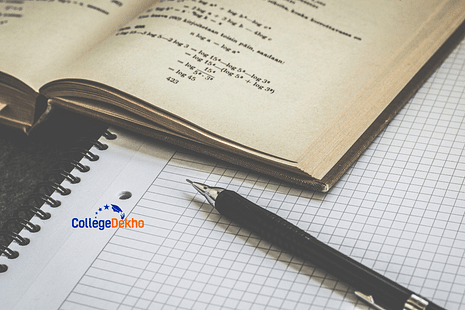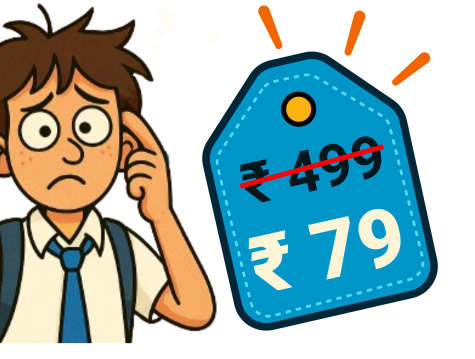
COMEDK Paper Pattern 2024 - The Consortium of Medical, Engineering, and Dental Colleges of Karnataka (COMEDK) has released the COMEDK Paper Pattern 2024 on the official website comedk.org. The paper pattern of COMEDK UGET 2024 consists of the details related to COMEDK 2024 such as the number of questions, mode of exam, number of sections, marking scheme, etc. COMEDK UGET 2024 exam will be conducted on May 12, 2024. The COMEDK UGET exam 2024 will be held as a Computer Based Test (CBT) for a duration of 3 hours consisting of 180 questions in total. The COMEDK exam will include 3 sections namely Physics, Chemistry, and Mathematics with 60 marks for each. Candidates can check here the COMEDK Paper Pattern 2024 along with the marking schemes and important topics.
LATEST : COMEDK Application Form Correction 2024 begins on April 16
- COMEDK 2024 Mock Test Released: Steps to practice, important instructions
- COMEDK 2024 Exam Date: Know when exam is scheduled to be conducted
Knowledge of the COMEDK 2024 Paper Pattern will allow the candidates to comprehend the paper pattern sufficiently. One of the best ways to grasp the exam pattern is by solving the COMEDK UGET mock test 2024 . The official mock test of COMEDK UGET 2024 has been released at www.comedk.org and candidates can attempt it for free. In this article, we will discuss the COMEDK Paper Pattern, COMEDK Marking Scheme 2024, and COMEDK 2024 Weightage.
COMEDK Paper Pattern 2024
Candidates before appearing for COMEDK UGET 2024 Exam are advised to check the COMEDK Paper Pattern 2024 to get clarity in the preparation for the exam.
Name of Section | Total number of questions | Total Marks allotted | Duration |
|---|---|---|---|
Mathematics | 60 | 60 | 3 hours |
Chemistry | 60 | 60 | |
Physics | 60 | 60 | |
Total | 180 | 180 |
COMEDK Exam Pattern 2024
The exam pattern of COMEDK UGET 2024 exam contains details such as the mode & medium of the exam, duration, marking scheme, types of questions, and subjects asked in the COMEDK exam. The table below highlights the COMEDK Exam Pattern 2024 .
- Candidates need to note that COMEDK UGET 2024 Exam is a computer-based exam
- As per the COMEDK Paper Pattern 2024, candidates will be asked from three sections- Physics, Chemistry, and Mathematics
- The duration of the COMEDK UGET 2024 exam will be of 3 hours where 1 hour will be for the Mathematics section and 2 hours will be for Physics and Chemistry sections
- In the event of a tie in the COMEDK UGET 2024 score, the principle of most inconsequential negative responses (Number of wrong answers) will be embraced. In addition, if needed, other techniques may be adopted to break ties.
Particulars | Details |
|---|---|
Name of the Exam | COMEDK UGET 2024 |
Full Form | Consortium of Medical, Engineering, and Dental Colleges of Karnataka Undergraduate Entrance Test |
Mode of Exam | Computer Based Test |
Medium of Exam | English |
Duration | 3 hours (180 minutes) |
Type of Questions | Multiple Choice Questions |
Sections | There were three sections in the COMEDK UGET 2024 exam-
|
Number of Questions per Section |
|
Total Number of Questions | 180 Questions |
Marking Scheme | Candidates will be awarded 1 mark for each correct answer |
Negative Marking | There were no negative markings in the COMEDK UGET 2024 exam |
COMEDK UGET Important Topics 2024
The important topics for COMEDK UGET 2024 are given in the table below.
Name of Section | COMEDK UGET 2024 Syllabus |
|---|---|
Physics |
|
Chemistry |
|
Mathematics |
|
Articles Based on COMEDK UGET 2024 Syllabus,
COMEDK UGET 2024 Deleted Topics (Previous Years)
As per the COMEDK UGET 2024 Syllabus , there are several chapters that have been omitted. Candidates are advised to check them so that they do not waste their time preparing the omitted topics from the COMEDK UGET 2024 Syllabus. The same has been listed in the table below.
Name of Section | Chapters | COMEDK UGET 2024 Syllabus |
|---|---|---|
Physics | Unit 1: Electrostatics | Uniformly charged thin spherical shell (field inside and outside) |
Unit 3: Current electricity | Carbon resistors, colour code for carbon resistors; series and parallel combinations resistors | |
Unit 4: Moving charges and Magnetism | Cyclotron | |
Unit 5: Magnetism and matter |
| |
Unit 7: Alternating current |
| |
Unit 8: Electromagnetic waves | Basic idea of displacement current | |
Unit 9: Ray optics |
(recapitulation) mirror formula
| |
Unit 10: Wave optics |
| |
Unit 11: Duel nature of radiation | Davisson-Germer experiment | |
Unit 13: Nuclei |
| |
Unit 14: Semiconductor devices |
| |
Chemistry | Unit 1 The Solid State |
|
Unit II: Solutions |
| |
Unit III: Electrochemistry |
| |
Unit IV: Chemical Kinetics |
| |
Unit VI: General Principles and Processes of Isolation of Elements | Full Chapter | |
Unit VII: p-Block Elements |
| |
Unit VIII: d and f Block Elements |
| |
Unit IX: Coordination Compounds |
| |
Unit X: Haloalkanes and Haloarenes. | Polyhalogen Compounds | |
Unit XI: Alcohols, Phenols, and Ethers | Some Commercially important Alcohols | |
Unit XIII: Amines |
| |
Unit XIV: Biomolecules |
| |
Unit 15 Polymers | Full Chapter | |
Unit 16 Chemistry in Everyday Life | Full Chapter | |
Mathematics | Unit 1: Relations and Functions | Composition of functions and invertible functions |
Unit 2: Inverse Trigonometric Functions |
| |
Unit 3: Matrices |
| |
Unit 4: Determinants |
| |
Unit 5: Continuity and Differentiability |
| |
Unit 6: Applications of Derivatives |
| |
Unit 7: Integrals |
| |
Unit 8: Applications of the Integrals |
| |
Unit 9: Differential Equations |
| |
Unit 10: Vectors |
| |
Unit 11: Three-dimensional Geometry |
(i) Two lines (ii) Two planes (iii) A line and a plane |
Related Articles:
We hope that this post on COMEDK Paper Pattern 2024 was helpful and informative. Stay tuned with Collegedekho for more articles and updates on COMEDK Paper Pattern.
Are you feeling lost and unsure about what career path to take after completing 12th standard?
Say goodbye to confusion and hello to a bright future!

FAQs
As per COMEDK Paper Pattern, there will be a total of 180 questions spread over the three sections of the exam- Physics, Chemistry, and Mathematics. Each section will have 60 questions. The total time duration of the exam will be 3 hours.
In the event of a tie in the COMEDK UGET 2023 score, the principle of most inconsequential negative responses (Number of wrong answers) will be embraced. In addition, if needed, other techniques may be adopted to break ties
As per the COMEDK UGET marking scheme, candidates will be granted1 mark for each correct answer. There will be no negative marking.
If you score 100 in COMEDK UGET 2023, you will get a rank between 3201-5500.
Scoring 150 marks in COMEDK can fetch a rank between 100-150.
Was this article helpful?




















Similar Articles
BTech Admission through COMEDK Counselling 2025: Mock Choice Filling (July 18-20), Seat Allotment, Document Required
How to Fill Choices during JEECUP Counselling 2025?
Jharkhand Diploma Lateral Entry Admission 2025 - Round 2 Choice Filling (Started), Seat Allotment, Document Verification
TNEA Counselling 2025 - Dates (OUT), Process, Choice Filling, Seat Allotment, Participating Colleges
JKCET Counselling 2025 (Started) - Dates, Seat Matrix (Out), Allotment Results, Merit List for BE/B.Tech
Maharashtra M.Tech Admission 2025: Dates (Out), Provisional Merit List (July 19), Eligibility, Process, Merit List, Counselling